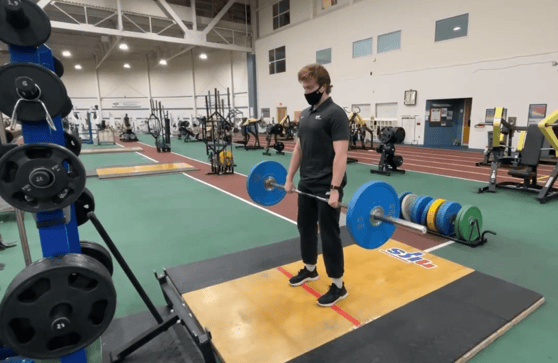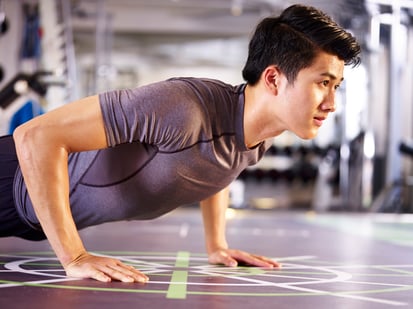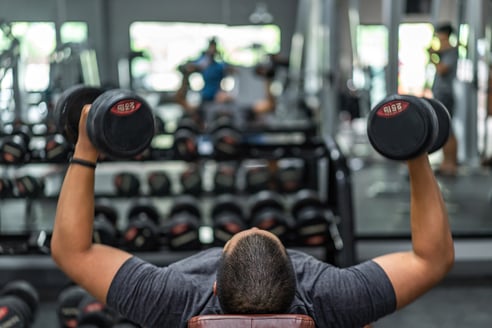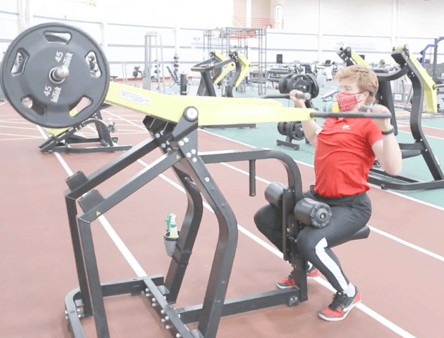 As a young trainer, I struggled to find my training style. I spent the first few months trying to make my clients happy, trying to make every session as hard as I could with no real connection between workouts. Our training had no direction; they were individual workouts according to what my clients wanted to work on that day. More times than not, this turned into working out one muscle group for the entire 30 minutes. I did a good job at working one muscle group, but that did not benefit them in the long term. As I grew in my education and as a trainer, I learned that there was a better approach to training: the full-body training split
As a young trainer, I struggled to find my training style. I spent the first few months trying to make my clients happy, trying to make every session as hard as I could with no real connection between workouts. Our training had no direction; they were individual workouts according to what my clients wanted to work on that day. More times than not, this turned into working out one muscle group for the entire 30 minutes. I did a good job at working one muscle group, but that did not benefit them in the long term. As I grew in my education and as a trainer, I learned that there was a better approach to training: the full-body training split
The Full-Body Split
The full-body training schedule reduces the amount of time you need to spend inside the gym while still working the different muscle groups more than once per week. A typical bro split is push, pull, leg. On that schedule, if you miss one day, you more than likely will not train that muscle group for another week. Now you have gone at least 14 days without training a specific muscle group. By training full-body in each training session, you will never miss hitting your lower or upper body within a week.
Putting It All Together
Using the movement patterns discussed in my previous blog, along with your weekly schedule, you can put together your weekly training schedule. There are a few different ways to schedule your week to make the full-body routine.
Three Days per Week
On a three-day-per-week schedule, your training days should be at least 48 hours apart. An example of an ideal schedule would be Monday, Wednesday, and Friday. With this schedule you will hit each movement pattern with at least one exercise per category. There is room, depending on how much time you have, to add more isolation movements at the end. A very basic week would look like this:
Day 1–3: Monday, Wednesday, and Friday
- Bench press
- Pull-up
- Back squat
- Kettlebell deadlift
Four Days per Week
For the four-day-per-week program, you will do a full-body push day and a full-body pull day. The full-body push day will consist of an upper-body press and a lower-body squat pattern. The full-body pull day will consist of an upper-body pull and a lower-body hinge pattern. The workouts can be done back to back at least 24 hours apart. An example of an ideal schedule would be Monday, Tuesday, Thursday, and Friday. A basic four-day-per-week schedule would look like this:
Days 1 and 3: Monday and Thursday
- Barbell bench
- Back squat
- DB incline bench
- Split squat
Days 2 and 4: Tuesday and Friday
- Deadlift
- Pull-up
- RDL
- Rows
Five and Six Days per Week
This is a more advanced version of the four-day-per-week schedule. You use the same full-body push/ pull split, but with not as many rest days. A five-day-per-week schedule cycles through each week, alternating between push and pull days. Week 1 has three push days and two pull days. Week 2 then starts with a pull day, giving you three pull days and two push days. After a four-week cycle, you will come out with the same amount of push and pull days. A six-day-per-week cycle is much easier to make, with alternating three push days and three pull days. A basic five- or six-day-per-week schedule looks like this:
Days 1, 3, and 5: Monday, Wednesday, and Friday
- Barbell bench
- Back squat
- DB incline bench
- Split squat
Days 2, 4, and optional 6: Tuesday, Thursday, and Saturday
- Deadlift
- Pull-up
- RDL
- Row
Get Help Structuring Your Program at NIFS
For more information on how to properly progress and structure a training program, visit us at the track desk to set up a session. We are more than happy to help at any time, and as a part of your membership here at NIFS, you can receive as many free workout programs as you would like. All programs are tailored to your fitness goals by our health fitness professionals.
This blog was written by Evan James, NIFS Exercise Physiologist EP-C, Health Fitness Instructor, and Personal Trainer. To learn more about the NIFS bloggers, click here.


 In my previous blogs I discussed the
In my previous blogs I discussed the  Let’s face it: building your own workouts isn’t always the easiest thing to do. Sure, you probably strike gold a few times a year and the exercises you choose seem to be flawless, from the balance of muscle groups worked to the flow of the routine that you get into. There is nothing better than having that program that just seems to get the job done.
Let’s face it: building your own workouts isn’t always the easiest thing to do. Sure, you probably strike gold a few times a year and the exercises you choose seem to be flawless, from the balance of muscle groups worked to the flow of the routine that you get into. There is nothing better than having that program that just seems to get the job done.  The traditional bodybuilding split of working one muscle group per day might work for the dedicated, high-level competitive bodybuilder who makes their living in the gym. But for the general population only looking to shed some unwanted pounds and improve their overall health, the traditional bodybuilding split is not ideal. Working multiple muscle groups in the same session is much more ideal because it ramps up the body’s metabolism more than working a single muscle group each day. To achieve this, we train the movement, not the muscles.
The traditional bodybuilding split of working one muscle group per day might work for the dedicated, high-level competitive bodybuilder who makes their living in the gym. But for the general population only looking to shed some unwanted pounds and improve their overall health, the traditional bodybuilding split is not ideal. Working multiple muscle groups in the same session is much more ideal because it ramps up the body’s metabolism more than working a single muscle group each day. To achieve this, we train the movement, not the muscles.